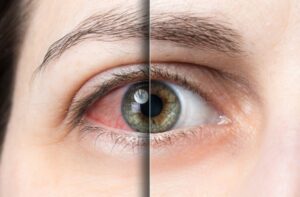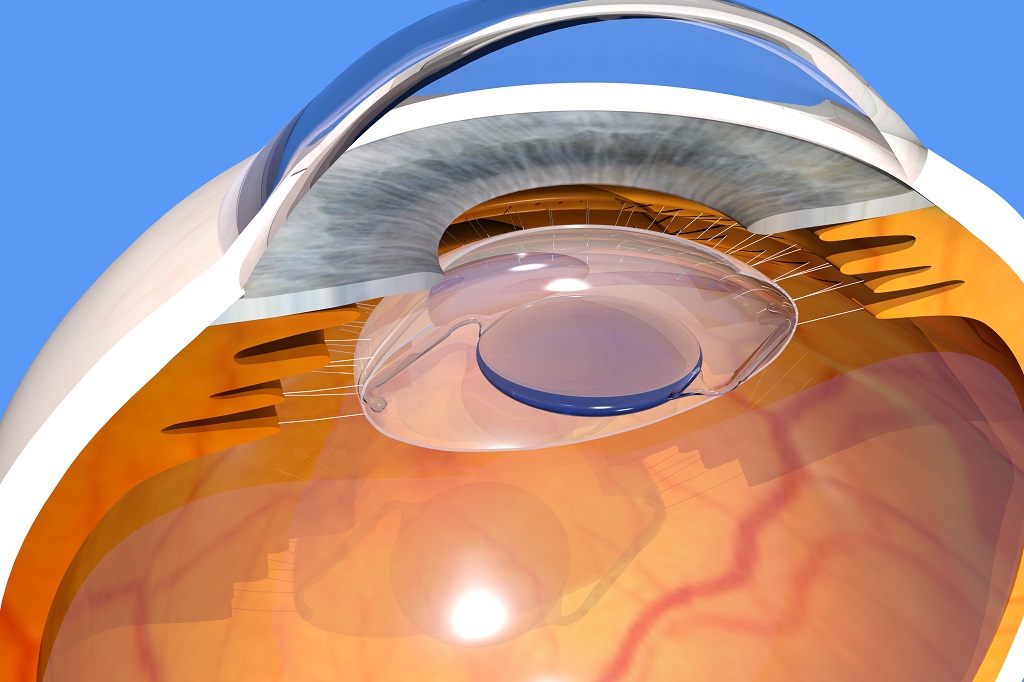The human eye is a remarkable organ that allows us to see the world around us with clarity and detail. However, as we age, many individuals develop refractive errors that affect their vision. Glasses and contact lenses have long been the go-to solutions for correcting these issues. However, advancements in medical technology have introduced alternative options for vision correction, such as refractive lens exchange (RLE), also known as lens replacement surgery. In this article, we will explore the ins and outs of RLE vision correction, including its definition, candidacy requirements, procedure details, benefits, risks, and the recovery process.
Contents
What is RLE Vision Correction?

RLE vision correction, or refractive lens exchange, is a surgical procedure that aims to correct refractive errors in the eye by replacing the natural lens with an artificial intraocular lens (IOL). Unlike other vision correction procedures such as LASIK or PRK, which reshape the cornea, RLE focuses on the lens of the eye. This makes it a suitable option for individuals with high degrees of nearsightedness or farsightedness, as well as those with presbyopia (age-related loss of near vision).
How RLE Differs from Other Vision Correction Procedures?
While LASIK, PRK, and other laser-based procedures reshape the cornea to correct vision, RLE focuses on replacing the natural lens. Here are some key differences between RLE and other vision correction procedures:
- Scope of Treatment: RLE is capable of treating a wider range of refractive errors compared to cornea-focused procedures. It can effectively address high degrees of nearsightedness and farsightedness, as well as presbyopia.
- Age Considerations: RLE is particularly beneficial for individuals who are over the age of 40 and experiencing age-related vision changes. It can address both the need for reading glasses due to presbyopia and other refractive errors.
- Long-term Solution: RLE offers a permanent solution to vision problems. The artificial intraocular lens implanted during the procedure remains in the eye indefinitely, providing clear vision without the need for additional corrective measures.
- Procedure Technique: While LASIK and PRK involve corneal reshaping using lasers, RLE involves removing the natural lens through a small incision and replacing it with an artificial lens. This makes RLE a suitable option for individuals with thin or irregular corneas, as it does not rely on corneal tissue for correction.
Who is a Good Candidate for RLE Vision Correction?

RLE vision correction may be suitable for individuals who meet certain criteria. Here are some factors to consider when determining if someone is a good candidate for the procedure:
Age Requirements
RLE is typically recommended for individuals over the age of 40, as this is when many people begin to experience presbyopia and other age-related vision changes. However, age alone does not determine candidacy, and a comprehensive eye examination is necessary to assess an individual’s suitability for RLE.
Prescription Stability
The individual’s prescription needs to be stable before considering RLE. This ensures that the corrected vision will remain stable over time. A stable prescription usually means little to no change in the eyeglass prescription for at least one to two years.
Eye Health Considerations
Candidates for RLE should have good overall eye health, free from conditions such as glaucoma, cataracts, macular degeneration, and corneal diseases. If any of these conditions are present, they may need to be addressed before considering RLE.
The RLE Procedure Step-by-Step
Before undergoing RLE, the patient goes through several stages to ensure a safe and successful procedure. Here is a step-by-step overview of the RLE process:
Pre-operative Assessment
Before the surgery, a comprehensive eye examination is conducted to evaluate the patient’s eye health, prescription, and overall suitability for the procedure. This assessment includes measurements of corneal thickness, pupil size, and the shape and length of the eye.
Numbing the Eyes
On the day of the surgery, numbing eye drops are administered to ensure a painless procedure. The patient is awake throughout the surgery but may be given a sedative to help them relax.
Creating an Incision
A small incision is made in the cornea to access the natural lens of the eye. This incision is typically less than 3 millimeters in length and is created using advanced surgical tools.
Lens Removal and Replacement
The natural lens is carefully removed through the incision. The surgeon may use techniques such as phacoemulsification, which involves breaking up the lens using ultrasound and removing it through suction.
Once the natural lens is removed, an artificial intraocular lens (IOL) is inserted into the eye through the same incision. The IOL is carefully positioned to provide the desired vision correction.
Closing the Incision
After the IOL is successfully implanted, the incision is closed using tiny sutures or a self-sealing technique. The sutures used are typically very small and may not require removal as they can dissolve on their own over time. The self-sealing technique involves the incision naturally sealing itself without the need for sutures.
Recovery Process
After the procedure, the patient is usually allowed to go home on the same day. However, it is essential to have someone accompany them as driving is not advised immediately after surgery. The recovery process typically involves:
- Resting and taking prescribed medications, including eye drops to prevent infection and inflammation.
- Wearing a protective eye shield or goggles to protect the eyes during sleep or while engaging in activities that may pose a risk of eye injury.
- Following post-operative care instructions provided by the surgeon, which may include avoiding rubbing the eyes, refraining from strenuous activities, and maintaining proper eye hygiene.
- Attending scheduled follow-up appointments to monitor the healing process and ensure the desired visual outcome.
Benefits of RLE Vision Correction

RLE offers several advantages for individuals seeking vision correction. Some notable benefits include:
Freedom from Glasses and Contact Lenses
After RLE, many individuals experience significantly reduced dependence on glasses or contact lenses. In some cases, they may no longer require them at all for daily activities.
Long-lasting Results
RLE provides a long-lasting solution to vision problems. The implanted artificial lens remains in the eye indefinitely, offering consistent and stable vision correction.
Immediate Improvement in Vision
One of the remarkable aspects of RLE is that patients often notice a significant improvement in their vision immediately after the procedure. This means that the benefits of the surgery can be enjoyed right away.
Correcting Both Nearsightedness and Farsightedness
RLE can correct a wide range of refractive errors, including both nearsightedness (myopia) and farsightedness (hyperopia). This makes it a versatile option for individuals with different types of vision impairments.
Risks and Complications

While RLE is generally considered safe, like any surgical procedure, there are potential risks and complications to be aware of. These can include:
Dry Eyes
Some patients may experience temporary dryness or irritation in the eyes following RLE. This can usually be managed with lubricating eye drops.
Glare and Halos
In some cases, individuals may experience glare or halos around lights, especially at night. This usually diminishes over time as the eyes adjust to the artificial lens.
Infection
As with any surgical procedure, there is a small risk of infection. This risk can be minimized by following proper post-operative care instructions and taking prescribed medications as directed.
Vision Changes
While RLE aims to improve vision, there is a possibility of experiencing changes in vision quality or clarity. These changes can often be addressed through additional treatments or enhancements if necessary.
Corneal Edema
In rare cases, corneal edema, or swelling of the cornea, can occur following RLE. This can cause temporary vision blurring, but it typically resolves with time and appropriate treatment.
Retinal Detachment
Although rare, retinal detachment is a serious complication that can occur after any eye surgery, including RLE. It is essential to be aware of the symptoms of retinal detachment, such as sudden flashes of light, floaters, or a curtain-like shadow across the visual field. Prompt medical attention is necessary if these symptoms occur.
Post-Operative Care and Recovery

Following RLE, proper post-operative care and recovery are crucial for optimal results. Here are some important considerations during the recovery period:
Medications and Eye Drops
The surgeon will prescribe specific medications, including eye drops, to prevent infection and reduce inflammation. It is important to carefully follow the prescribed dosage and frequency of these medications.
Follow-up Appointments
Attending scheduled follow-up appointments is essential for monitoring the healing process and assessing the success of the procedure. These appointments allow the surgeon to make any necessary adjustments or address any concerns that may arise.
Avoiding Strenuous Activities
During the initial recovery period, it is important to avoid activities that may strain the eyes or increase the risk of injury. This includes heavy lifting, intense exercise, swimming, and activities that involve rubbing or putting pressure on the eyes.
Proper Eye Hygiene
Maintaining good eye hygiene is crucial during the recovery phase. This includes avoiding touching or rubbing the eyes unnecessarily, keeping the eyes clean, and following the recommended hygiene practices provided by the surgeon.
Recognizing Signs of Complications
While complications after RLE are rare, it is essential to be aware of any potential signs of complications. These can include severe pain, sudden vision loss, increasing redness or discharge from the eyes, or any other significant changes in vision. If any of these symptoms occur, it is important to seek immediate medical attention.
Conclusion
Refractive lens exchange (RLE) is an advanced vision correction procedure that offers a viable solution for individuals seeking freedom from glasses or contact lenses. With its ability to address various refractive errors, including presbyopia, nearsightedness, and farsightedness, RLE provides long-lasting and immediate improvement in vision. While risks and complications exist, proper pre-operative assessment, careful surgical technique, and diligent post-operative care can help minimize these risks. If you are considering RLE, consult with an experienced eye surgeon to determine your candidacy and explore the potential benefits of this innovative procedure.
LASIK eye surgery is a safe 10-minute procedure to help you get rid of glasses. EyeMantra offers the most advanced LASIK options including PRK, Femto Lasik, SMILE surgery, Standard LASIK, ICL, and Contoura vision. If you have any questions on Lasik surgery in Delhi, Lasik surgery cost, and Lasik procedure, call us at 9711116605 or email at [email protected].



Hi there, just became aware of your blog through Google, and found that
it is truly informative. I am going to watch out for brussels.
I’ll be grateful if you continue this in future. A lot of people will be
benefited from your writing. Cheers! Escape room lista